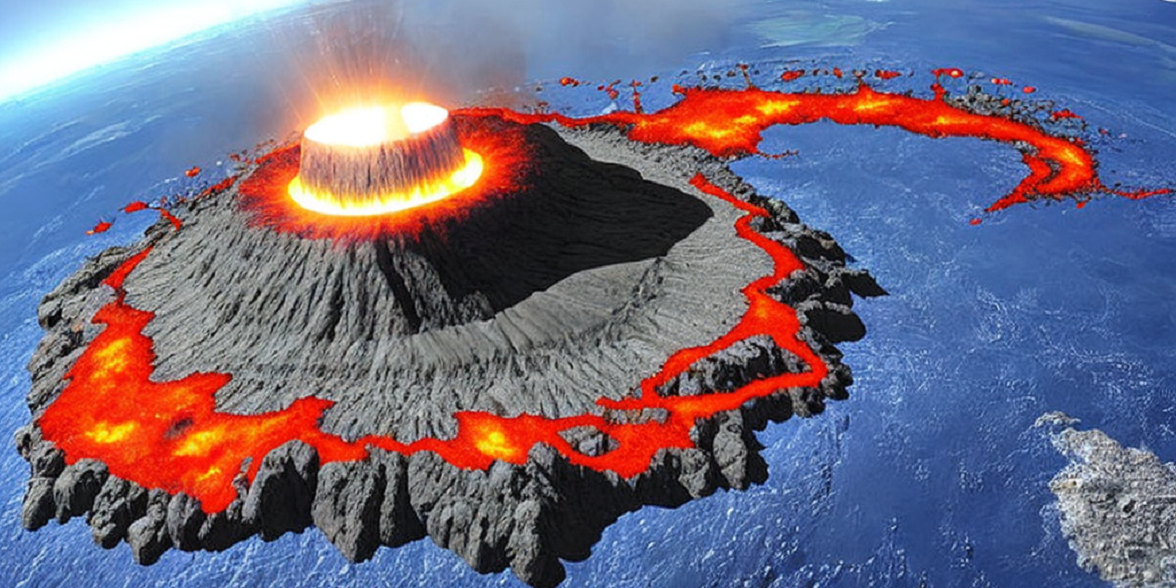Exploring the Potential Super Volcanoes That Could Shake Our World to Its Core
In the grand tapestry of Earth’s history, cataclysmic events have etched their mark, leaving us awestruck by the sheer power of nature. From the asteroid impact that wiped out the dinosaurs to the ice age that sculpted our landscapes, Earth’s story is one of transformation through cataclysm. Yet, nestled beneath the surface, a ticking time bomb remains, poised to unleash a force that could rival the most imaginative doomsday scenarios: the super volcano.
In this article, we look at the world of super volcanoes, those huge, hidden behemoths that could bring our civilization to its knees. We’ll uncover the science behind their formation, investigate the likelihood of a near-future eruption, and identify the most formidable candidates that could reshape our world. Prepare to be enthralled as we explore these ticking titans and consider the steps we can take to safeguard humanity against their fiery fury.
The Unseen Threat
Super volcanoes, the ultimate eruption machines, have existed since the dawn of our planet. Unlike the familiar stratovolcanoes, these enigmatic giants don’t simply create craters; they reshape continents and plunge the world into darkness. Driven by massive magma chambers far beneath the Earth’s crust, these titans slumber for millennia before they awaken in a spectacular eruption that can have dire consequences for life on Earth.
The mechanics behind super volcano eruptions are a complex interplay of geological forces, where molten rock, ash, and gases combine to form a pyroclastic nightmare. The eruption of a super volcano can release thousands of cubic kilometers of material into the atmosphere, blocking sunlight and triggering a volcanic winter… a scenario that could lead to crop failure, famine, and mass extinction.
The Candidates
Just as entrepreneurs identify untapped markets, scientists are keenly examining the geological landscape for potential super volcanoes. Among the candidates that could blow in the near future, a few stand out as particularly ominous.
- Yellowstone Caldera, USA: The crown jewel of super volcano candidates, Yellowstone National Park is home to a slumbering giant. Its last colossal eruption occurred nearly 640,000 years ago, blanketing North America in ash. While geologists agree that the next eruption is a matter of “when” rather than “if,” pinpointing the timeline remains a mystery.
- Long Valley Caldera, USA: Nestled in California’s Sierra Nevada range, Long Valley Caldera boasts a history of eruptions that date back over 2 million years. Its most recent major eruption occurred around 760,000 years ago. Despite the remote location, an eruption could impact global climate patterns.
- Campi Flegrei, Italy: Known as the “Burning Fields,” this super volcano lies beneath the bustling city of Naples. Recent ground inflation and seismic activity have put Campi Flegrei on the radar for potential eruption. The threat is real and raises questions about how to evacuate a densely populated urban area.
- Taupo Volcano, New Zealand: In the heart of the North Island, Taupo Volcano has erupted multiple times in the past 26,000 years. Its most recent eruption, known as the Oruanui eruption, occurred around 26,500 years ago. Despite the frequency of activity, the potential scale of a super eruption remains a matter of ongoing research.
- Toba Caldera, Indonesia: Toba’s cataclysmic eruption some 74,000 years ago created the world’s largest volcanic crater. The event nearly brought about human extinction due to the “volcanic winter” that followed. While the odds of an imminent eruption are low, the consequences remain a sobering reminder of nature’s power.
Predicting the Unpredictable
Predicting when a super volcano will erupt remains a tantalizing challenge for scientists. The complex interplay of geological, hydrothermal, and magmatic forces makes accurate forecasting similar to peering into a crystal ball. Yet, advancements in monitoring technology offer a glimmer of hope.
Geophysicists and seismologists are employing an arsenal of tools—from GPS measurements that track ground deformation to seismic networks that detect the rumblings of magma—to gain a deeper understanding of these restless giants. The goal is not just to predict eruptions, but to provide valuable lead time for evacuation and disaster preparedness.
Preparing for the Unthinkable
As we move further into an uncertain future, preparedness becomes paramount. Communities living in the shadows of potential super volcanoes must develop robust contingency plans, while governments and international organizations must collaborate to create disaster response frameworks on a global scale.
Preparedness goes beyond emergency protocols; it extends to harnessing the power of technology. Advances in geothermal energy production could offer an innovative solution to mitigate the impacts of a super eruption. By converting the heat from magma chambers into usable energy, we could turn a potential catastrophe into a sustainable resource.
Final Thoughts: Embracing the Unknown
As we’ve journeyed through the shadowy realm of super volcanoes, one truth becomes abundantly clear: we are not the ultimate architects of our destiny. Mother Nature wields powers that dwarf our most ambitious feats, and the key to our survival lies in humility and resilience.
While the specter of a super volcano eruption looms ominously, it is also a reminder of the fragility and interconnectedness of our planet. In embracing the unknown, we find the strength to adapt, innovate, and collaborate. The fear of the unknown is more paralyzing than the uncertainty of the future. Let us not be paralyzed by fear, but rather inspired by the boundless potential within us to navigate the challenges that lie ahead… no matter how colossal they may be.
